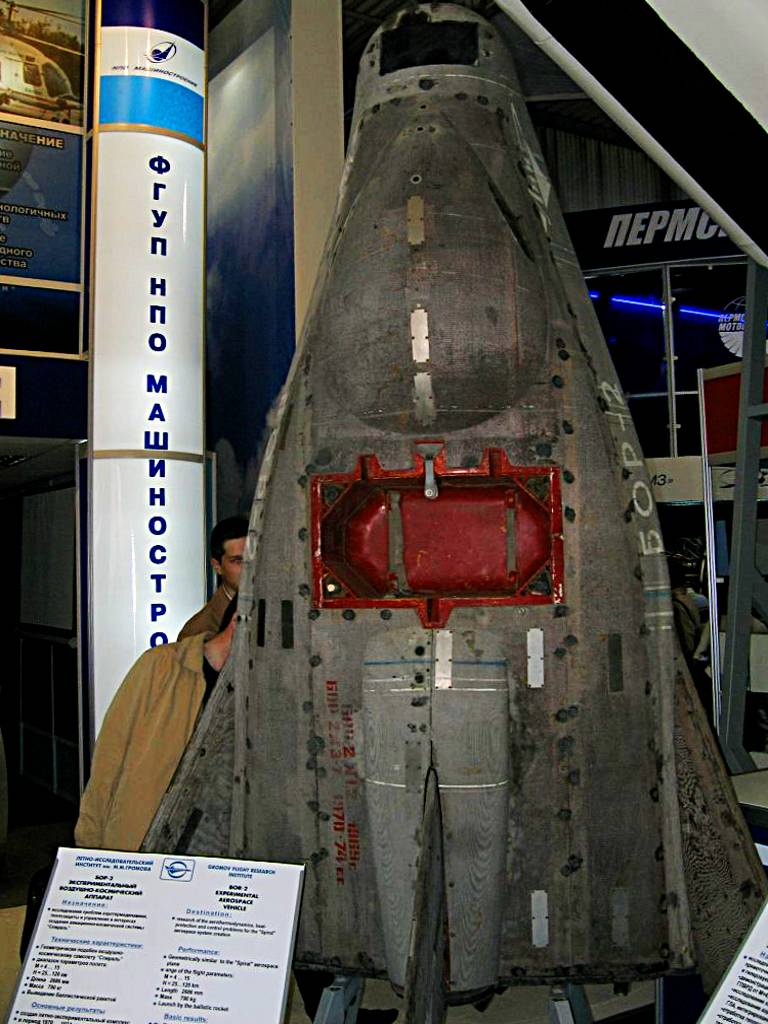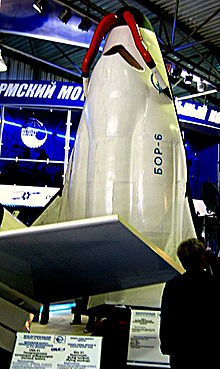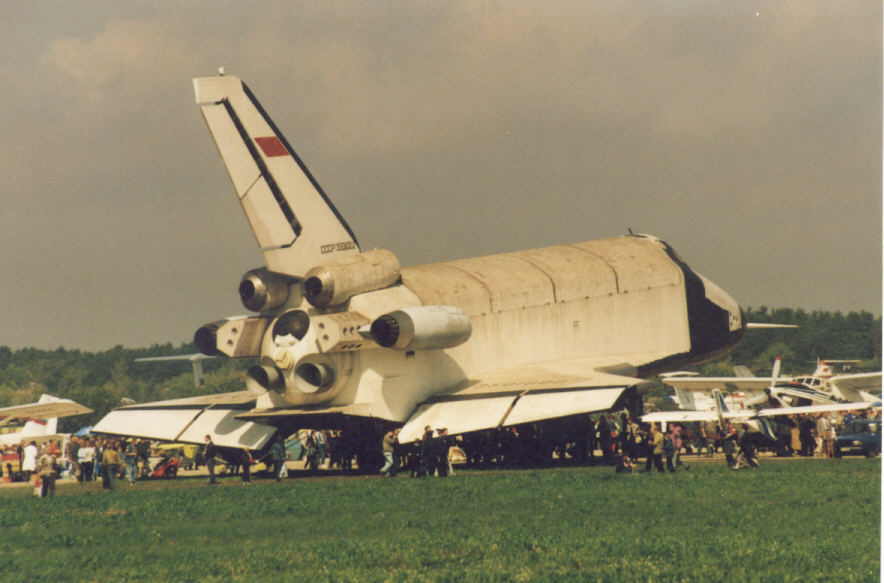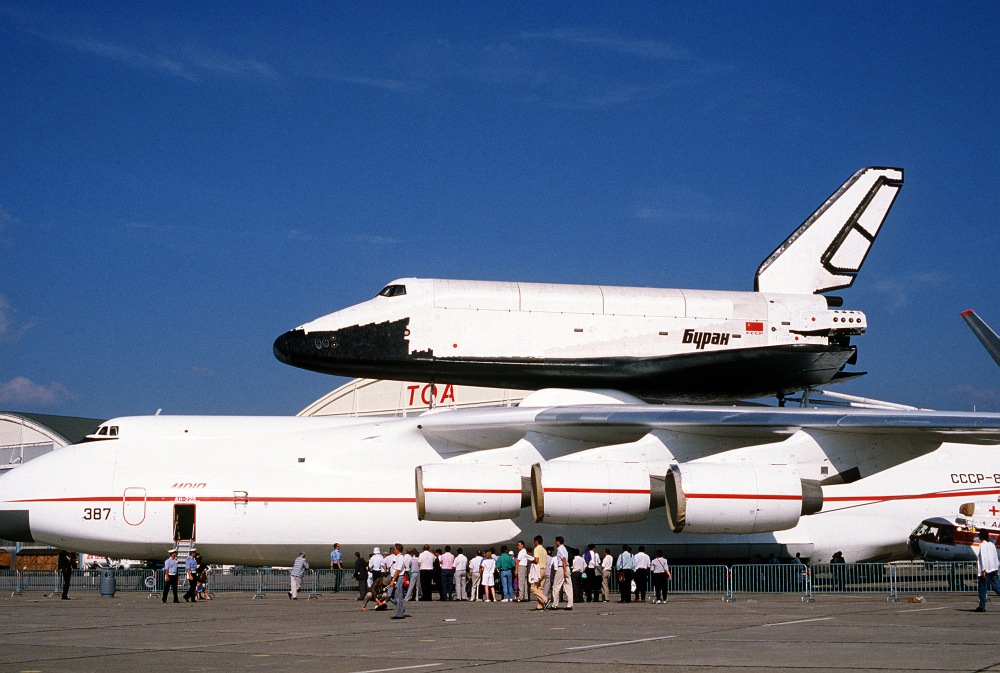After an overview on how it was decided to built a reusable space transportation system in my previous article I will now have a closer look at the actual development of the orbiter and the integration of the Energija Rocket System.
So we are back in 1976. America was working on the STS system and achieved step after step. The program was on an outstanding way to success and it was no secret that it would change payload delivery in space forever.
In Russia, Walentin Petrowitsch Gluschko, head of the newly formed NPO Energija divison was also working on a space delivery truck… starting with empty papers and full pockets. Gluschko understood that he had quite usable date from the, at this time, still running “Spiral” project. But he also knew that the americans had the better concept of getting the orbiter into space using external boosters in addition to strong rocket motors. the Spiral plan to airlift the orbiter with a supersonic mothership was great for smaller orbiters but lifting a several hundred ton brick to space was another task. Most likely the idea to use the Energija was one of the first ones to come to his mind but this will never be known for sure as there are simply no records about it. In fact very little is known about this integration. Many sources even say the development of Energija was part of the Buran Program from scratch. This is proven wron simply with the fact that development of the Energija started while Russia still believed the right way to launch such a system was Air to Air. It is also known that the very first Energija studies showed a classic top mounted payload. So for now lets just assume the integration of Energija was one of the first decisions made in the Buran program.
So with a proper carrier, a proper idea and lots of money to spend there still was no Idea for an orbiter. Meanwhile in America, the STS program gained military interests and the Department of Defense officially supported the project in a financial way. Also in Russia the idea of military use escalated quickly. Lucky Gluschko suddenly even had more money to spend but also the expectations grew with the military now being part of the project. Russia wanted to use the Buran as a weaponcarrier, for espinonage and many more… As usual this led to first conflicts in the wanted specifications and the program became more and more political. But in Russia that is not neccesarily a bad thing. The result was that some analysts claimed the official NASA Space Shuttle cost paper, that was available to public, as too optimistic and unrealistic. They concluded that this was on purpose to hide military budget. Believe it or not that meant no less than more money for Gluschko and his team.
In 1978 Gluschko worked on the orbiter and soon found out that he would need the help of somebody who has experience with that topic. It came in his favor that meanwhile the Spiral project was cancelled and he hired Gleb Losino Losinski, Chief Designer of the OS Lifting Body. While the americans were confident enough to build the shuttle with data from wind channels and smart engineering from scratch, Losinski chose a diffrerent way – The BOR testbeds.
Losinski figured that he could test different designs of orbiters with sending scale models to suborbital test flights. 6 of those scale models were built. BOR 1 – 3 hereby being very basic and testing several aerodynamic reactions. Very little is known about those 3, but it is believed that BOR 1 was a evolution of the OS and BOR 2 and 3 only had minor changes to this design. Reason to believe that, is that BOR 2 was on Display at MAKS 2005 showing a design quite close to the OS.

Much more is known about BOR 4, 5 and 6. BOR 5 is the final Buran design in a 1:8 scale and executed a total of four test flights between 1985 and 1988. While BOR 5 was testing the first actual orbiters have already been in production. This may seem like not making sense in the first place, but it actually does. The Buran project was believed to last so long that development of future Orbiter models went parallel.
BOR 4 flew 5 times, all flights reaching suborbital altitudes between 1982 and 84. BOR 4 shows a lifting body design, just like the final BOR 6, which never flew but was a size increased version of BOR 4 with minor changes. It was finished in 1988 but than put to storage and the lifting body idea was discontinued.
Interesting fact: Today it is commonly acknowledged that a new Shuttle type has to be a lifting body configuration. Most likely Russia was just ahead of their time and decided to go to delta wing configuration for undisclosed reasons. This decision led to the same design problems, US engineers had with the completely differently developed space shuttle and this decision is also the reason why many people believe the Buran is no more than a copy of the Space Shuttle.


Alongside the BOR tests a very special test article was developed. The OK-GLI. This was a 1:1 Scale model of the future Orbiter with no intention to travel to space. It was equipped with a crew cockpit as well as remote landing systems and 4 jet engines for takeoff. OK-GLI is the part of the Buran program that flew the most, performing a total of 25 flights between 1984 and 1988, mostly to test the autoland system. OK GLI was the only Buran ever fitted with jet engines even though the actual orbiters were supposed to have 2 jet engines next to the rudder to give a better landing performance.
I will feature the OK GLI, as well as the Eenergija and the built orbiters in separate articles, as there is way to much to write about them for this overview.

After first positive tests with the OK GLI the first Orbiter OK-1K1 was produced in 1986. 2 further orbiters also went into production. After a successful Energija Test on May 15th 1987 without orbiter the first Buran System takeoff occurred on November 15th 1988. The orbiter was unmanned, circled the earth 2 times and spend 140 minutes in space with a total mission time of 202 minutes. 1K1 landed safely at Baikonur Spaceport. After this flight it was sent to Paris Air Show in 1989 on the back of an Antonov 225 Mirja a stretched version of the Antonov 124 solely built for the buran program. Whilst the US SCA 747s were built for flight testing and than later used for Orbiter transportation, the AN 225 was only built for transportation. This outstanding one of a kind Airplane will also receive its on article on this blog.

Leaving Paris in 1989 bound for Baikonur was not only the only but also the last appearance of 1K1 outside Russia… The political situation started to change in 1989 leaving the project in jeopardy.
My next article will be about the end of the Buran Program, the aftermath and its legacy..